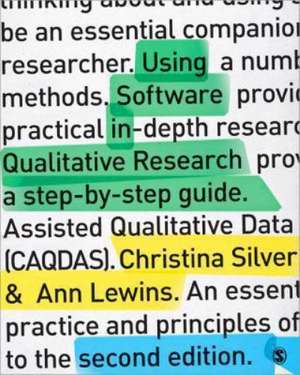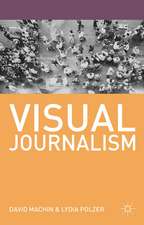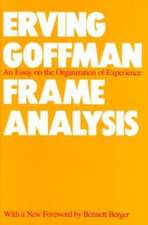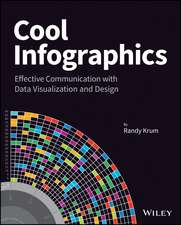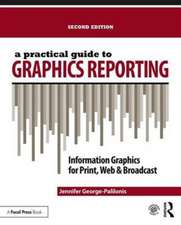Using Software in Qualitative Research: A Step-by-Step Guide
Autor Christina Silver, Ann Lewinsen Limba Engleză Paperback – 30 apr 2014
This book considers a wide range of tasks and processes in the data management and analysis process, and shows how software can help you at each stage. In the new edition, the authors present three case studies with different forms of data (text, video and mixed data) and show how each step in the analysis process for each project could be supported by software.
The new edition is accompanied by an extensive companion website with step-by-step instructions produced by the software developers themselves. Software programmes covered in second edition include the latest versions of:
- ATLAS.ti
- DEDOOSE
- HyperRESEARCH
- MAXQDA
- NVivo
- QDA Miner
- TRANSANA
Preț: 396.10 lei
Nou
Puncte Express: 594
Preț estimativ în valută:
75.79€ • 79.35$ • 62.71£
75.79€ • 79.35$ • 62.71£
Carte disponibilă
Livrare economică 15-29 martie
Livrare express 01-07 martie pentru 45.11 lei
Preluare comenzi: 021 569.72.76
Specificații
ISBN-13: 9781446249734
ISBN-10: 1446249735
Pagini: 384
Dimensiuni: 186 x 232 x 20 mm
Greutate: 0.68 kg
Ediția:Second Edition
Editura: SAGE Publications
Colecția Sage Publications Ltd
Locul publicării:London, United Kingdom
ISBN-10: 1446249735
Pagini: 384
Dimensiuni: 186 x 232 x 20 mm
Greutate: 0.68 kg
Ediția:Second Edition
Editura: SAGE Publications
Colecția Sage Publications Ltd
Locul publicării:London, United Kingdom
Recenzii
This book is essential reading for anyone navigating the complex and exciting terrain of qualitative data analysis software. Silver and Lewins emphasize the importance of data preparation; being familiar with one’s software program before starting analysis; and being reflective, methodologically purposeful, and fluid in how one uses the available features of a given program.
This is a timely update to the best volume of its kind. Christina Silver and Anne Lewins have brought their detailed and uniquely balanced account of the landscape of qualitative research, and the functions of software therein, into sharp contemporary focus. This is not only an invaluable practical guidebook for newcomers to CAQDAS, but also an essential reference text for the more seasoned qualitative researcher.
The new edition is extraordinarily authoritative and seriously useful, detailed yet unfailingly interesting. It brings methodological goals and software possibilities together in a more accessible and lively way. With thorough and practical website resources it will be an essential reference for anyone wondering about software use - and that of course is everyone doing qualitative research.! It confronts the reader firmly with the challenges and complexities of qualitative work and the power, mixed offerings and sometimes considerable limitations of existing software. It's so carefully written, and the authors' voices are so clear, that it encourages, steadily explains and assists. The authors' enthusiasm and unique experience and knowledge of the field shine through, so against all odds for such a technical work, this book is a bloody good read!
This book is recommendable for all researchers and practitioners in different scientific fields – psychology, sociology, literature, etc. – for all who deal with qualitative and mixed methods for data processing, interpretation and presentation.
This publication is an impressive and exhaustive undertaking (with a book, three data sets consisting of many different types of data, and detailed instructions for seven CAQDAS programs), particularly given the depth, breadth, and ever changing nature of this field. The authors are to be commended for tackling this very challenging topic... Researchers who choose to both immerse themselves in the book and take advantage of the online resources and related exercises will be richly rewarded.
This is a timely update to the best volume of its kind. Christina Silver and Anne Lewins have brought their detailed and uniquely balanced account of the landscape of qualitative research, and the functions of software therein, into sharp contemporary focus. This is not only an invaluable practical guidebook for newcomers to CAQDAS, but also an essential reference text for the more seasoned qualitative researcher.
The new edition is extraordinarily authoritative and seriously useful, detailed yet unfailingly interesting. It brings methodological goals and software possibilities together in a more accessible and lively way. With thorough and practical website resources it will be an essential reference for anyone wondering about software use - and that of course is everyone doing qualitative research.! It confronts the reader firmly with the challenges and complexities of qualitative work and the power, mixed offerings and sometimes considerable limitations of existing software. It's so carefully written, and the authors' voices are so clear, that it encourages, steadily explains and assists. The authors' enthusiasm and unique experience and knowledge of the field shine through, so against all odds for such a technical work, this book is a bloody good read!
This book is recommendable for all researchers and practitioners in different scientific fields – psychology, sociology, literature, etc. – for all who deal with qualitative and mixed methods for data processing, interpretation and presentation.
This publication is an impressive and exhaustive undertaking (with a book, three data sets consisting of many different types of data, and detailed instructions for seven CAQDAS programs), particularly given the depth, breadth, and ever changing nature of this field. The authors are to be commended for tackling this very challenging topic... Researchers who choose to both immerse themselves in the book and take advantage of the online resources and related exercises will be richly rewarded.
Cuprins
Introduction
Qualitative Data Analysis and CAQDAS
The Nature of Software Support for Research Projects
Software Summaries
Data and Their Preparation for CAQDAS Packages
Early Steps in Software: Practical Tasks and Familiarisation
Exploration and Data-level Work
Qualitative Coding in Software: Principles and Processes
Basic Retrieval of Coded Data
Working with Coding Schemes
Managing Processes and Interpretations by Writing
Mapping Ideas and Linking Concepts
Organising Data by Known Characteristics
Interrogating the Dataset
Convergence, Closeness, Choice
Qualitative Data Analysis and CAQDAS
The Nature of Software Support for Research Projects
Software Summaries
Data and Their Preparation for CAQDAS Packages
Early Steps in Software: Practical Tasks and Familiarisation
Exploration and Data-level Work
Qualitative Coding in Software: Principles and Processes
Basic Retrieval of Coded Data
Working with Coding Schemes
Managing Processes and Interpretations by Writing
Mapping Ideas and Linking Concepts
Organising Data by Known Characteristics
Interrogating the Dataset
Convergence, Closeness, Choice
Descriere
This essential introduction to the practice and principles of CAQDAS helps readers to choose the most appropriate package for their needs and get the most out of the software once they are using it.
